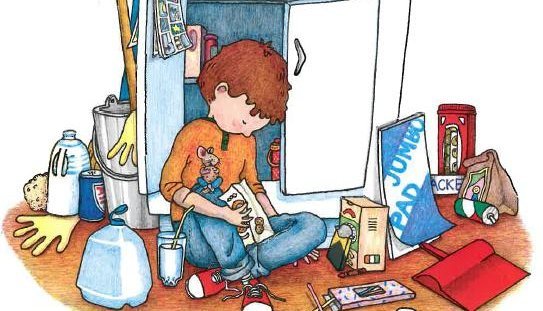My wife and I have three young daughters and as a bedtime ritual we read stories to the girls each evening. One of the family’s favorite books is If You Give A Mouse A Cookie by Laura Numeroff.

This tale is about a young boy who gives a cookie to a mouse and inadvertently unleashes a recursive sequence of needs. The cookie generates a desire for a glass of milk, which creates a yearning for a straw, then a requirement for a napkin. After many additional twists and turns the narrative ends with the boy exhausted and the mouse hungry for yet another cookie.
As a product manager and lifelong technology tinkerer, I often wonder if there are lessons from this book that can be applied to product development and user experience design.
In 2010 a blogger named Samad Aidane suggested that If You Give A Mouse A Cookie offers a cautionary warning about scope seep, when project managers allow extra tasks and deliverables to creep into a plan. It is interesting to think about how the theme of creep relates to product managers as they strive to make tough decisions about product roadmaps.
As engineers, designers and product professionals we often begin development with the intention of solving a specific problem. If we are successful and sooth a particular dilemma for our users we can earn their goodwill and ultimately create additional cravings.
When faced with these additional demands, novice product managers may fall into the trap of giving a customer false hope that a feature will be developed in the near future. Most software users simply do not appreciate the neglect and oblivion associated with the average product wish list (or icebox in the parlance of scrum).
In addition to misaligning customer expectations, a catchall wish list can hobble the decision making process for a product manager. Prioritizing product objectives only grows more difficult as a catalog of aspirational features expands.
To maintain realistic customer expectations and improve the velocity of development, we can take a lesson from Numeroff’s story and simply say no!
Never heard of basing project management on children's book fables.
Downvoting a post can decrease pending rewards and make it less visible. Common reasons:
Submit
I don't know if I would base project management on a children's book, but there are certainly allegories in fables that can be salient and insightful.
Downvoting a post can decrease pending rewards and make it less visible. Common reasons:
Submit
Beta testers aren't children asking for a cookie. Usually, they're serious users, customers and sometimes potential clients. They're focusing their time to help improve your product. Feature requests, many times, lead to major development improvements. Don't beta test if that suits you better. This applies to Steemit as well.
Downvoting a post can decrease pending rewards and make it less visible. Common reasons:
Submit
I think you are conflating things a bit. I didn't mention beta testers in my post.
While some feature requests will lead to product improvements, most do not. They can be major distractors.
Also, the story is about a mouse asking for a cookie. In this allegory, the child is the product manager.
Downvoting a post can decrease pending rewards and make it less visible. Common reasons:
Submit